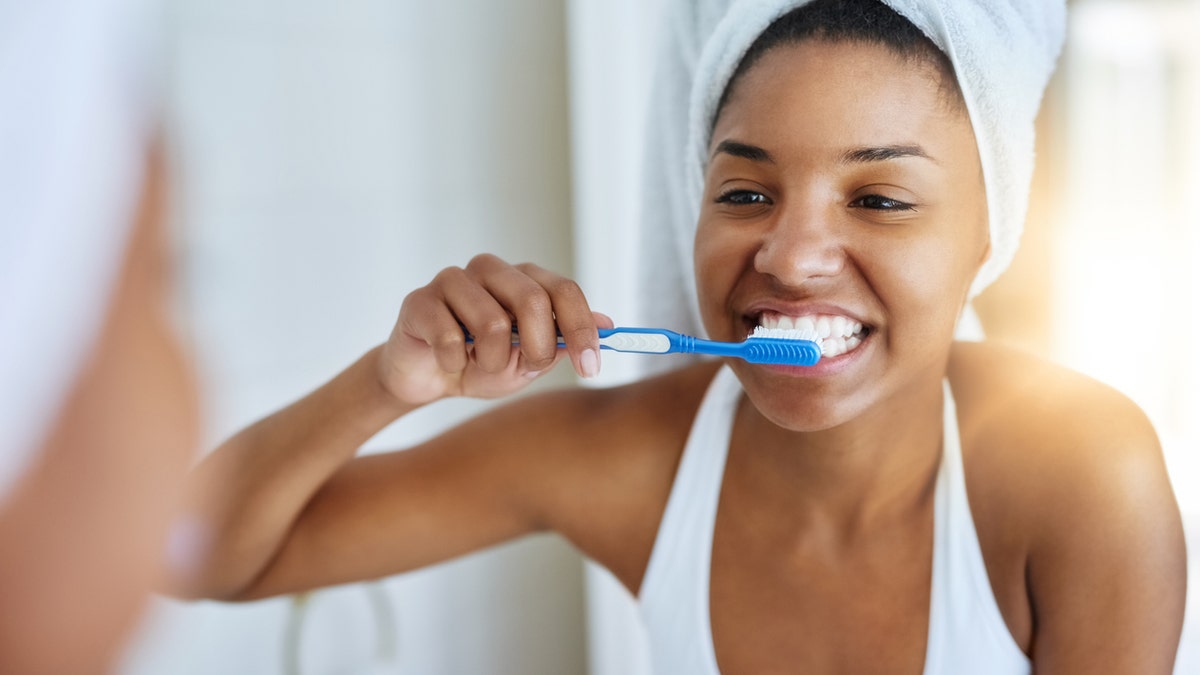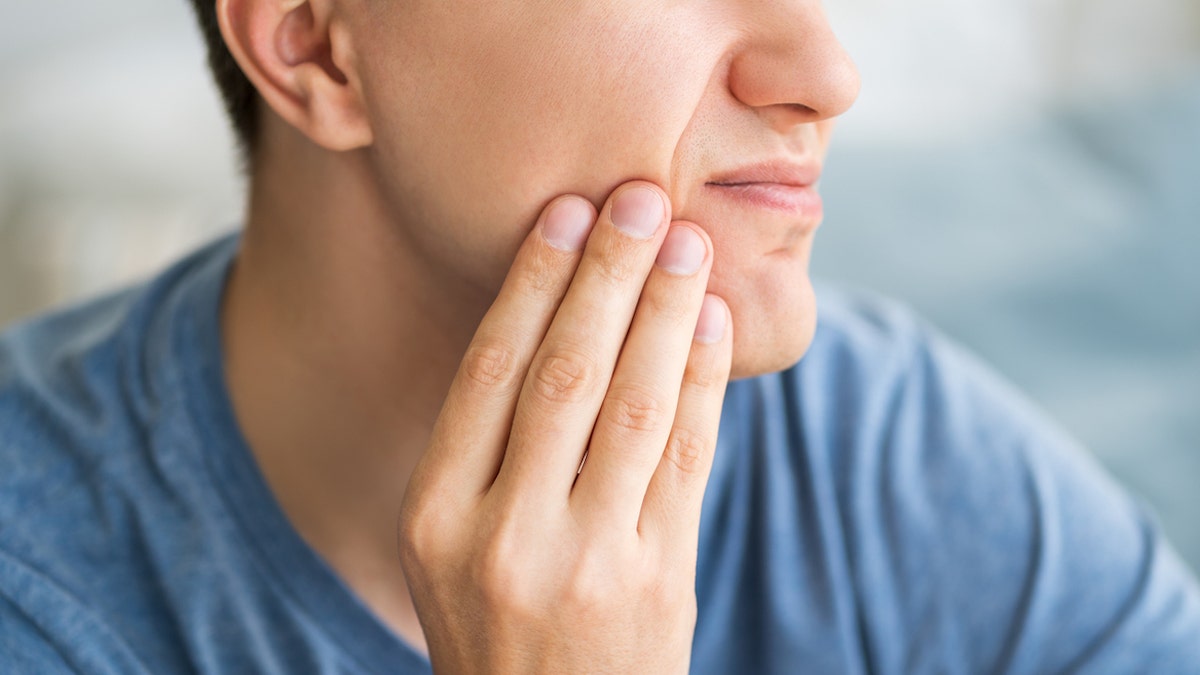The potential benefits of oil pulling are intriguing to many, but the process may be less than favorable.
Oil pulling seems like a trendy topic with its increasing popularity, but the technique is actually an Indian folk remedy, according to Healthline.
The process of oil pulling is simple.
THESE ARE THE WORST DENTAL MISTAKES YOU CAN MAKE FOR YOUR TEETH
Put oil in your mouth, swish, swish, swish — and spit it out.
One of the big drawbacks to oil pulling is how long you have to do it for. For optimal results, oil pulling should be done for about 15 to 20 minutes.

Oil pulling is a popular step that many have added to their dental routines. (iStock)
Is oil pulling worth trying?
Read on to uncover more information.
- What does oil pulling actually do?
- Should you brush your teeth before or after oil pulling?
- Are there any negative side effects to oil pulling?
- How long should you oil pull?
- What oil can be used for oil pulling?
1. What does oil pulling actually do?
Many people swear by oil pulling, mainly as a way to get rid of harmful bacteria in the mouth.
As for expert opinion, the verdict is still out.
The American Dental Association doesn't recommend oil pulling due to the lack of scientific evidence to date that backs the remedy, according to Healthline.

Oil pulling consists of placing about a tablespoon of oil into the mouth and swishing it around for 15 to 20 minutes. (iStock)
That said, there have been a few studies to suggest that some benefits associated with oil pulling could be true.
In 2016, a study was done with 60 adults who completed oil pulling with coconut oil for 10 minutes each day. It was found that these adults experienced a reduced number of S. mutans in saliva after doing this method for two weeks, compared to distilled water, according to Healthline.
Therefore, the thought that oil pulling reduces harmful bacteria could be true, but there isn't enough evidence to say for sure.
6 WACKY HEALTH TRENDS THAT HAVE GONE VIRAL
A 2020 study proved that oil pulling is effective at reducing plaque, but again, more research is needed to be done, according to the source.
As far as teeth whitening goes, oil pulling has not been proven as an effective method to use.
2. Should you brush your teeth before or after oil pulling?
You should brush your teeth after oil pulling.

Oil pulling is not a replacement for brushing and flossing. For a clean, healthy smile, it's important to keep up with good brushing habits. (iStock)
Keep in mind that oil pulling is not a replacement for brushing and flossing.
Rather, it is an addition to a dental routine.
3. Are there any negative side effects to oil pulling?
Since there haven't been a lot of studies on oil pulling, there aren't really any known direct side effects.
CLICK HERE TO SIGN UP FOR OUR LIFESTYLE NEWSLETTER
That said, you may experience soreness of the jaw due to the motion used for oil pulling, according to Colgate.
If you swallow too much of the oil, you could also get an upset stomach.

Your jaw could be a little sore when you first start oil pulling. (iStock)
4. How long should you oil pull?
Many have added oil pulling to their morning routines.
Usually, it's done for 15 to 20 minutes, but you can work your way up to that amount of time.
Start with just five minutes of oil pulling to get used to the feeling and then slowly add more time as you get more comfortable.
Since oil pulling takes such a large chunk of time, many opt to do it as they are completing other morning tasks, like showering or doing their hair. Playing music as you swish the oil around can also help time go by faster.
CLICK HERE TO GET THE FOX NEWS APP
When your 20 minutes are up, do not spit the oil into the sink, unless you want clogged drains. Instead, throw oil into the trash.
5. What oil can be used for oil pulling?
Coconut oil is commonly used for oil pulling.
You could also use sesame or sunflower oil, if you prefer.
All you need is one tablespoon of oil for oil pulling.
For more Lifestyle articles, visit www.foxnews.com/lifestyle.


